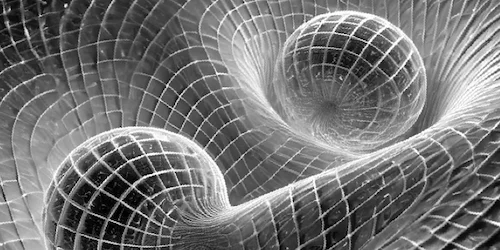
New Theory Explains Dark Matter’s Origins: Could it Be Surprisingly Simple?
Where does dark matter come from? Scientists at Dartmouth College have proposed a groundbreaking new theory that offers a surprisingly simple explanation for the origin of dark matter, the mysterious substance that makes up a significant portion of the universe and shapes galaxies. This elusive substance, usually envisioned as massive, cold particles, may have started as something entirely different: nearly massless, relativistic particles zipping through the early universe at near-light speed.
According to Robert Caldwell, senior author of the study, "Dark matter started its life as near-massless relativistic particles, almost like light." This idea challenges the conventional understanding of dark matter as cold, heavy particles that give galaxies their mass.

The researchers, including undergraduate Guanming Liang, suggest that in the immediate aftermath of the Big Bang, countless high-energy particles, similar to photons (light particles), filled the universe. Under specific conditions, two of these quanta could bind together due to opposing spins, forming a pair akin to magnets attracting each other. This bonding process led to a dramatic drop in energy and a surge in inertia, transforming racing rays into hefty relics.
Liang explained: "The most unexpected part of our mathematical model was the energy plummet that bridges the high-density energy and the lumpy low energy." This transformation is akin to steam condensing into water – a sudden transition from a diffuse gas to a denser phase.
This phase transition, Caldwell suggests, helps explain the abundance of dark matter we can detect today. The phenomenon could be similar to Cooper pairs in superconducting metals, where two electrons with opposite spins form a pair that glides without electrical resistance. This analogy, highlighted by Caldwell, suggests a real-world example of the energy plummet driving the formation of these dark matter pairs. The study further suggests this dark matter candidate could have left observable signatures in the cosmic microwave background (CMB).
Liang emphasizes that the new theory addresses both the cold dark matter density needed for galactic structures and the observed decrease in the universe's overall energy density since its early moments.
The team predicts a distinctive imprint on the CMB, which has already been mapped by satellites and ground-based projects. Future surveys, such as those at the Simons Observatory in Chile and planned CMB Stage-4 experiments, could reveal the subtle pattern predicted by their equations, strengthening the case for heavy pairs born from light-like quanta.
Caldwell notes, "We're presenting a new approach to thinking about and possibly identifying dark matter."
This new theory provides a middle ground, one that is testable.
Existing and future data could either validate or refute their theory. Either outcome will refine our view of the invisible framework that holds the cosmos together.
What if the universe has been reshaped by matter trading light speed for lasting weight? This would change everything!
Share your thoughts and insights in the comments below!